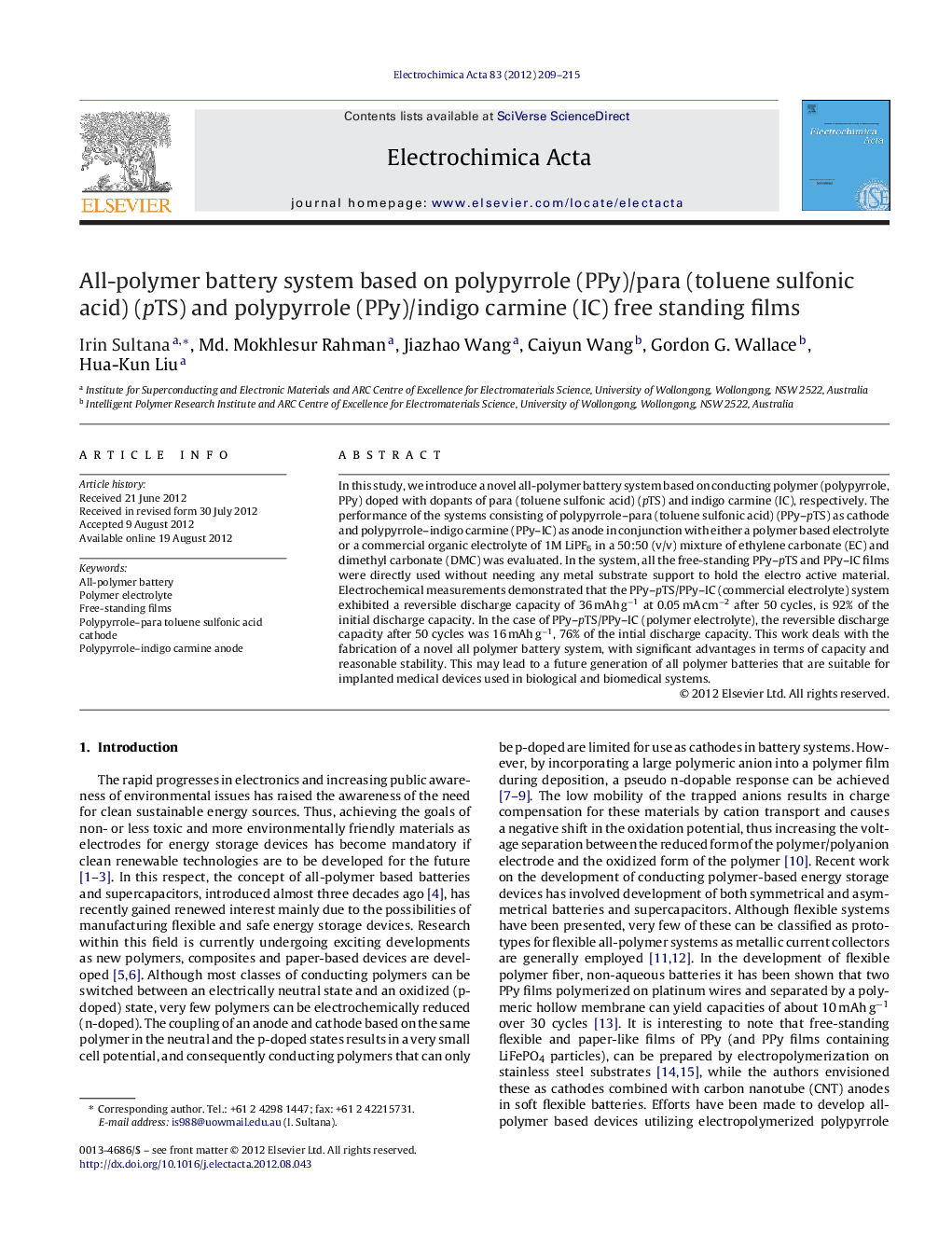| Article ID | Journal | Published Year | Pages | File Type |
|---|---|---|---|---|
| 188081 | Electrochimica Acta | 2012 | 7 Pages |
In this study, we introduce a novel all-polymer battery system based on conducting polymer (polypyrrole, PPy) doped with dopants of para (toluene sulfonic acid) (pTS) and indigo carmine (IC), respectively. The performance of the systems consisting of polypyrrole–para (toluene sulfonic acid) (PPy–pTS) as cathode and polypyrrole–indigo carmine (PPy–IC) as anode in conjunction with either a polymer based electrolyte or a commercial organic electrolyte of 1M LiPF6 in a 50:50 (v/v) mixture of ethylene carbonate (EC) and dimethyl carbonate (DMC) was evaluated. In the system, all the free-standing PPy–pTS and PPy–IC films were directly used without needing any metal substrate support to hold the electro active material. Electrochemical measurements demonstrated that the PPy–pTS/PPy–IC (commercial electrolyte) system exhibited a reversible discharge capacity of 36 mAh g−1 at 0.05 mA cm−2 after 50 cycles, is 92% of the initial discharge capacity. In the case of PPy–pTS/PPy–IC (polymer electrolyte), the reversible discharge capacity after 50 cycles was 16 mAh g−1, 76% of the intial discharge capacity. This work deals with the fabrication of a novel all polymer battery system, with significant advantages in terms of capacity and reasonable stability. This may lead to a future generation of all polymer batteries that are suitable for implanted medical devices used in biological and biomedical systems.
Graphical abstractFree-standing PPy–pTS and PPy–IC films were prepared via electropolymerization. The films are porous, mechanically robust, lightweight, and flexible and can be molded into various shapes. A novel all-polymer battery system based on these films is reported.Figure optionsDownload full-size imageDownload as PowerPoint slideHighlights► A novel all-polymer battery system. ► Free-standing films are mechanically robust. ► The system shows significant advantages. ► All polymer batteries can be used in biological and biomedical systems.
